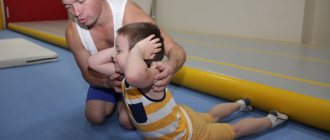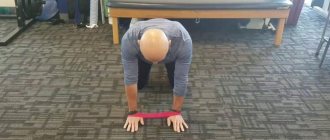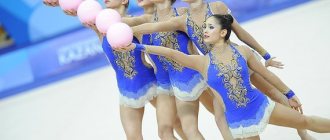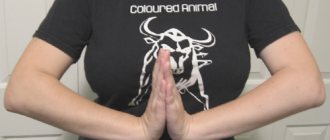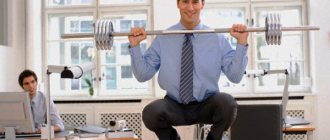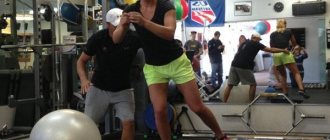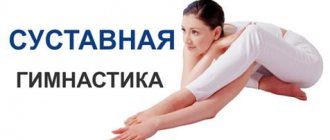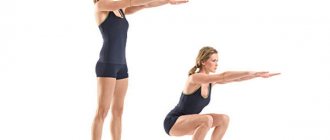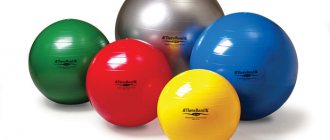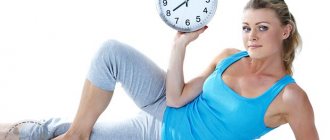Currently, gymnastic balls (fitballs), due to their excellent health-improving qualities, are present in almost any fitness center and are very popular among people with musculoskeletal disorders, among people suffering from excess body weight, as well as among pregnant women and children, starting from infancy. Training with a gymnastic ball is not considered strength training, and therefore is an excellent help in the fight against diseases of the cardiovascular system, varicose veins, etc.
Right choice
In order to start training with a gymnastic ball, you need to choose it correctly. When purchasing, you should take into account that high-quality balls are made of high-strength elastic material - ledraplastic, which can be sold through orthopedic salons or sports stores. It is in these places that it is better to buy a fitball.
As a rule, the product is deflated and packed in a box. In order to inflate a gymnastics ball, you will definitely need a pump: be it a special one, a bicycle pump, or a “foot” pump. It doesn't matter. When inflated, the ball can support up to 300kg of weight, so don't worry about it bursting as soon as you sit on it.
Focus your attention on the color of the ball. If you suffer from low blood pressure and for this reason feel a lack of energy, take an orange or red fitball, and if you are constantly tense and subject to frequent stress, take a blue or green one. Without attributing healing properties to individual colors, it should be noted that this little thing plays an important role in shaping your mood. In any case, you need to choose colors that will not irritate or strain your eyesight.
And most importantly, how to choose the diameter of the ball? The correct thing to do in this matter would be to focus on your own height and arm length.
Dependence of ball diameter (in.m.) on height:
| d.m. – 45 cm | height – less than 152 cm |
| d.m. – 55 cm | height – 152-165 cm |
| d.m. – 65 cm | height – 165-185 cm |
| d.m. – 75 cm | height – 185-202 cm |
Dependence of the diameter of the ball (l.m.) on the length of the arm (l.r.):
| d.m. – 45 cm | dl. R. – 46-55 cm |
| d.m. – 55 cm | dl. R. – 56-65 cm |
| d.m. – 65 cm | dl. R. – 66-80 cm |
| d.m. – 75 cm | dl. R. – 81-90 cm |
Storage Features
The gymnastic ball should be stored away from flammable substances and any heat sources, and, despite the fact that the fitball is not so easy to puncture and deflate, its contact with cutting or piercing objects and sharp surfaces should be avoided.
The essence of the exercises
In one case or another, exercises with a fitball bring enormous health benefits and are an effective prevention of many diseases. Exercises using it:
- improve the vestibular system,
- strengthen the muscle corset,
- stimulate blood circulation,
- promote weight loss,
- normalize metabolism,
- have an analgesic effect,
- increase intestinal motility and stomach function.
What other benefits do exercises with a fitball have, we will look into further, as we will present some examples of the use of the ball by people who want to improve their health, lose excess weight, as well as by pregnant women and infants. Of course, this does not mean that the gymnastic ball cannot be used for recreational purposes by other categories of the population. Training with it is very useful for children of any age, people who are busy and have hard work, elderly people, etc.
BE HEALTHY
Place the ball on the floor. Place one foot on top of the ball. The other leg is firmly on the floor. Sit up straight, press your back against the back of the chair. Roll the ball back and forth with your foot, slowly.
Then, the same movement is performed with the other leg. These exercises with massage balls can be performed with both legs, rolling the ball alternately, or with both legs at the same time. Alternatively, you can make circular movements with one leg, then the other.
The exercise is performed at a slow pace with a good range of motion. The exercise can be performed with both legs at once, either alternately, or with both legs at the same time.
Exercises for different muscle groups
The first gymnastic ball appeared back in the 50s of the last century in Switzerland for the purpose of rehabilitating patients with cerebral palsy. In the 80s, the ball was used mainly to treat patients with problems with the musculoskeletal system, so first we will get acquainted with some exercises that have a beneficial effect on various muscle groups.
Pectoral muscles
Focus on straight arms, and place the gymnastic ball under your shins. The back should be straight and in one straight line with the legs. Place your palms slightly wider than your shoulders. Bend your elbows and lower yourself as low as possible, then return to the starting position. If you find it difficult to balance on the ball, lean on it not with your shins, but with your hips. Over time, move the ball closer to your ankles. You should not bend at the lower back.
Muscles of the buttocks and legs
Stand with your back to the ball. Stretch your arms forward. Raise the foot of your right leg and keep it at a height of 20-30 cm above the floor. Then slowly bend the knee of your left leg and squat until your buttocks lightly touch the surface of the ball. Secure the ball so that it does not jump out from under the body. You must keep your head straight. The exercise is repeated 10-15 times with alternate use of both legs.
Back muscles
Lie on your stomach on an exercise ball with your palms on the floor shoulder-width apart. Using your hands, move your body slightly forward, with the ball under your knees and your body forming a straight line. Legs should remain straight. The feet should be kept together and the hands should be under the shoulder joints. To maintain balance, try to tense your core muscles, but keep your neck and head relaxed. While in this position, tense your abs and lift your hips up (while your legs should not be bent) so that your feet rest against the ball. Very slowly return to the starting pose. Repeat the exercise 8 – 10 times.
Abdominal muscles
Sit on an exercise ball. Place your feet flat on the floor, crossing your arms over your chest. Stepping your feet, carefully lower yourself forward so that your back is on the ball and your knees are under your ankles. You should keep your head suspended and not tilt it back. Then begin to gradually “twist”: first tuck your head, then your shoulders and finally the middle of your back - until you feel a complete contraction of the abdominal muscles. Slowly return to the starting pose. The exercise is repeated 8 – 10 times.
Arm muscles
Lean on the ball with your arms straight. Hands should be shoulder-width apart. After this, step back and spread your legs wide. Tighten your abs and lower yourself down, bending your arms. At the same time, try to keep your elbows as close to your body as possible. Return to the starting pose. The exercise is repeated 10 times. It is necessary to keep your back straight.
SLIDE
Place your hand on your knee, palm up. The fingers are tightly clenched together. Place a ball on your hand. With your other hand, begin to lift the ball up to your neck. Then press the ball slightly with your head tilted. Hold for a count of 5, and then “lower” the ball down. Gradually increase the count to 10. The same exercise is performed with the other hand. It is important to ensure that the child rolls the ball along the entire length of his arm.
The same exercises with massage balls can be performed by turning one hand with the back of the palm facing up. You can perform leg exercises while sitting on a chair.
Exercises for slimness
Balls that have a textured surface and provide a massage effect during exercise are a great help in shaping a slender figure. You need to exercise regularly (2-4 times a week). You need to take breaks between classes so as not to
There was no feeling of overexertion and fatigue. One workout should last 30-60 minutes depending on the individual level of readiness. There are a lot of exercises with a fitball. You can do a “squeeze” for yourself and practice, periodically replacing some exercises with others.
- As a warm-up, take 30 side steps in each direction, and then, picking up an exercise ball, repeat them. With each step, extend your arms with the ball in the direction of movement, raising it to shoulder level.
- To begin the exercise, lie on the floor with your legs extended and your heels resting on an exercise ball. While in this position, lift your hips up, tensing your abdominal and buttock muscles, while simultaneously rolling the ball towards you using your heels. At the top point, the body to the knees should be in the form of a straight line, and the knees should be bent at a right angle. Take the starting pose. Do the exercise 10-15 times. This exercise will help remove all the “extra” from the hips.
- While in a standing position, squeeze the gymnastic ball between your legs as tightly as possible with your inner thighs. Then, drawing your stomach in, tighten your thigh muscles and hold this tension for about a minute. After this, without releasing the ball, do 20-30 jumps on your toes. This exercise is aimed at improving the condition of the hips and abdomen.
- Now you can do push-ups on an exercise ball. To do this, lie face down and place your hips or feet on the ball. Hands should rest on the floor, elbows should remain straight. Then tense your abs and use your hands to lower yourself to the maximum depth without your shoulders touching the floor. The back should remain straight at all times while performing the exercise. Repeat 10-12 times.
- Stand directly in front of an exercise ball. Place your left foot on it. The knee should remain straight. Roll the ball to the side until your body looks like the letter “T”. The right leg should be slightly bent. Stretch your arms forward and from this position do 20 squats. Then switch legs and repeat. This exercise helps tighten your buttocks.
BOAT
Press both hands towards you with your elbows. Turn your palms up into a boat position. Place a ball in one of your palms. Throw the ball from one palm to another, constantly maintaining the original “boat” position.
When throwing the ball, the palm that makes the throw must be slightly turned and try not to throw the ball high. Perform the exercise at the same pace. As soon as the child has mastered the exercise, the pace of its implementation can be accelerated.
Exercises for pregnant women
Exercises with a gymnastic ball are recommended for pregnant women because they develop flexibility, reduce muscle pain, improve blood circulation, provide a surge of strength, etc. By exercising, pregnant women strengthen not only their own health, being in any trimester, but also the body of the unborn baby. The only contraindications for exercising with a ball are complications during pregnancy. When planning to exercise, be sure to consult your gynecologist.
- Sit on a gymnastic ball and, maintaining balance, lean your hands on it. It is necessary to rock the pelvis in different directions. This simple exercise can also be done without using your hands.
- Sit on the ball. Your arms should be extended and resting on the ball. After this, turn to the right, placing your left hand behind your right leg. Lock yourself in this position. Turning in the other direction, repeat the exercise.
- Sit on an exercise ball and bend forward with your arms extended in front of you. Stand up straight. Raise your arms up, slightly spreading them to the sides (it is not recommended for pregnant women to hold their arms straight above their heads).
- Sit on the ball. Legs should be bent at the knees and flat on the floor. Extend your right leg, placing it on your heel. After this, stretch your whole body towards it so that you can touch the sock with your hand. Repeat the exercise using your left leg.
- In a standing position, extend your right leg forward and your left leg back, holding a gymnastic ball with your left hand. Bend your left leg at the knee (with your left hand resting on the ball) and straighten up again. Perform in the other direction.
- Sit on the ball and move your right leg to the side. With your right hand, reach towards your right leg. Take the starting position, and then perform the exercise in the other direction.
- While standing, bend your back and rest your hands on the gymnastic ball. Place your feet shoulder-width apart. Roll the ball forward, moving your hands, and then return back.
- Sit on the ball and try to lie on it with your back, while slightly spreading your legs to the sides.
- Sit on an exercise ball with your hands on your hips. Start moving on the ball with springy movements, first forward and backward, left and right, and then in a circle.
- In a standing position, hold the ball with your arms extended forward. Squeeze it in your hands and try to bring it as close to you as possible, and then move it away from you again.
ROLLE YOUR PALM
Press the elbow of your left hand tightly towards you, turn your hand palm up. The fingers are tightly closed together. Place the ball on your palm and cover the ball with your other hand. The fingers of the upper palm are tightly clenched together. Move your upper palm back and forth along the length of your entire palm. Make sure that the child does not raise his shoulder while performing this exercise. Repeat the same with the other hand. Perform the exercise slowly, with a good range of motion. Such exercises are carried out when a ball is rolled on the back of the hand. In this case, the palm lies on the table, back side up.
Exercises for infants
Fitball exercises are incredibly useful for infants, regardless of whether they have health problems or are healthy in all respects, especially since such pro
Problems such as intestinal colic, as a rule, do not bypass any of them. The point is that with the help of “fitball” exercises, the child’s gastrointestinal motility is stimulated, the nervous system is formed and functions normally, the tone of the flexor muscles decreases, the musculoskeletal system develops correctly, flexibility is trained, the immune system is strengthened, and liver function improves. , adrenal glands and other organs. It is not necessary to perform exercises every day - 2-3 times a week is enough.
Recommendations:
- do not work with the baby if the umbilical wound has not healed,
- do not work with your child if he is sick and has a high temperature,
- postpone the lesson if the baby is not in the mood,
- do not force your child to do activities if he does not like them,
- conduct classes with your child in the morning,
- conduct classes with your baby 1-1.5 hours after eating,
- start with a few minutes, gradually increasing the time,
- If your child has any illness or disease, consult your pediatrician about it before starting classes.
1 – 6 months
- Place your child on an exercise ball, tummy down. Then take it by the arms or legs and begin to rock it slightly - back and forth, to the sides. It is important to remember that the baby’s joints are still very weak, so you should not pull on his feet or hands.
- Turn the baby onto his back. Then, holding his chest and tummy with your palms, rock him from side to side.
- Lay the baby on his tummy or back, and then, pressing lightly on the body and holding both of his legs with the other hand, begin to make jerking movements, pressing on the ball.
- Place the child on your lap or any hard surface, and roll a gymnastic ball to his feet, which he will immediately begin to push away.
6 – 12 months
- This exercise requires 2 adults. The baby should be placed on his tummy. One adult should take him by the arms, another by the legs. Then you need to alternately pull the child towards you so that he touches the ball with his arms and legs.
- Place the gymnastic ball so that it does not slip out from under your baby’s feet, as you will have to give him the opportunity to jump. To do this, simply grab the child’s body with both hands and hold him there until he gets tired.
- Place your baby on the ball, tummy down. In this case, its handles should rest against the ball, and its body should be in an elevated state. Take the child by the legs and gently rock him back and forth and to the sides.
- Place your baby on his tummy and hold his legs. Then lower the child so that he can get the toy from the floor.
- Place your baby on his tummy with his legs facing you. Then grab them and roll them first towards you, bending the baby’s legs at the knees, and then away from you, pushing and straightening them.
- Place the child with his back on the gymnastic ball and hold him by the forearms. Then, lightly pulling them, sit the baby down and hold it for a few seconds, then lower him back onto his back. This exercise can be started from 9 months of age.
And finally...
Don't forget to do a short warm-up before starting your workout, which will prepare your muscles and ligaments for the load and also prevent injury.
After finishing your workout, do relaxation exercises for a few minutes, which will help consolidate the positive results.
Both recommendations also apply to infants. Babies also need to be prepared before starting to play with the ball (i.e., stretched a little) and relaxed after, for example, with the help of light stroking.
And one more thing: in order to increase the effectiveness of exercise, adults can even use a gymnastic ball instead of a chair or armchair.
HEDGEHOG
Imagine that a hedgehog comes to visit you. All movements are performed in accordance with the text.
The hedgehog was exhausted - He carried apples and mushrooms. We'll rub his sides, we need to knead them a little. And then we’ll stroke the legs so that you can rest a little. And then we’ll scratch the belly and tickle it near the ear. The hedgehog ran away along the path, “Thank you!” squeaked.
The child takes pity on the hedgehog, strokes it, scratches it, tickles it. In response to the words “he ran away along the path,” the ball can be rolled on the table or knees.
YaiToy Massage ball Cat
